On December 24, 2024, the Center for Media Research – Nepal (CMR-Nepal) organized a panel discussion on “The Future of Journalism” during the Kathmandu Conference on Communication and Media in Kathmandu. Here is the summary report:
Moderator: Dr. Shreeram Paudel (Assistant Professor, Central Department of Journalism and Mass Communication, Tribhuvan University)
Panelists: Mr. Yubaraj Ghimire (editor in chief, Deshsanchar.com), Ms. Nirmala Sharma (president, Federation of Nepali Journalists), Mr. Gopal Guragain (Ujyaalo Network) and Mr. Biswas Baral (editor, The Kathmandu Post daily)
Summary of Panel 4 – The Future of Journalism
The fourth panel, “The Future of Journalism,” explored how journalism is evolving in the digital era. The discussion highlighted the importance of accountability, the necessity of high-quality content, and the crucial role media plays in shaping public opinion. Panelists emphasized the need for public funding, rigorous content verification, and the role of journalism in a rapidly changing technological landscape.
The panel underlined the need for accurate, well-researched, and ethical content. Traditional print media is steadily giving way to digital platforms and social media, necessitating a rethinking of how journalism is produced and distributed—while upholding the core principles of truth, accuracy, and fairness.
Panelists noted that intense competition between traditional media and digital platforms can both drive innovation and create challenges. They also highlighted the state’s role in supporting journalism by investing in media literacy, backing independent journalism, and ensuring public access to reliable information.
In conclusion, the panel recognized that while journalism faces considerable challenges, it also presents new opportunities for innovation and growth. Ensuring sustainability will require high standards of accountability, adaptability to new mediums, healthy competition, and investment in quality journalism. Recommendations included investing in training and resources for media houses, supporting media literacy programs, fostering collaboration between traditional and digital media, and implementing strong mechanisms for fact-checking and content verification to combat misinformation.
Statements by the Panelists
Mr. Yubaraj Ghimire
“My experience in print media shows that while the medium has transformed, core principles remain vital,” said Ghimire.
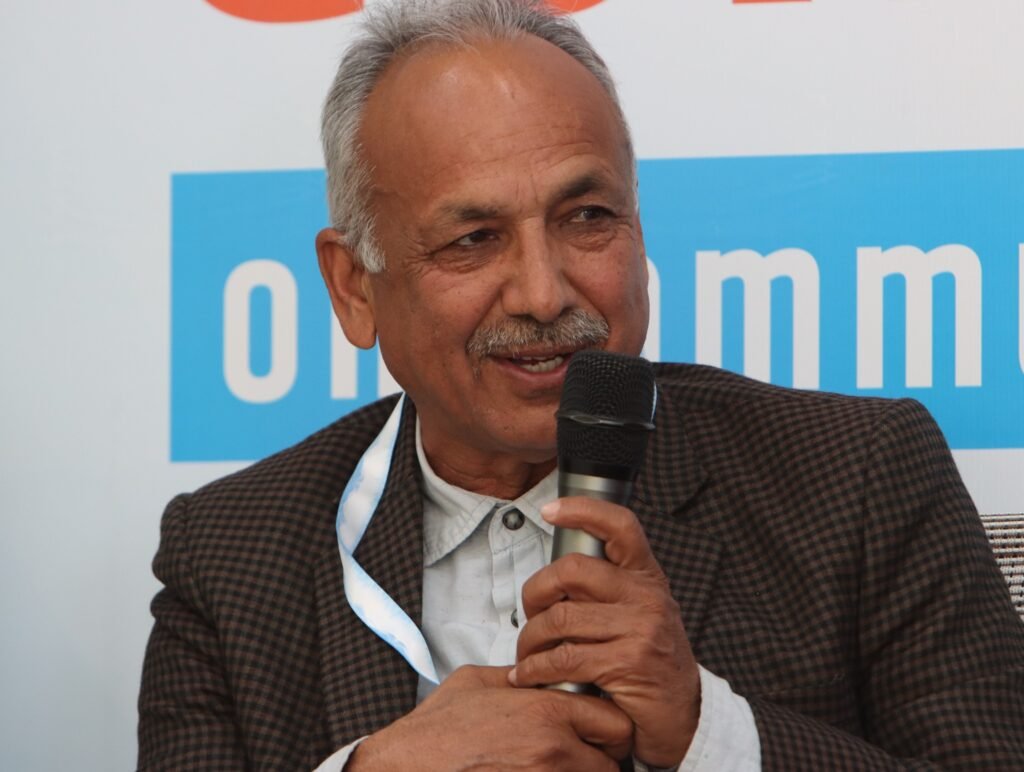
He emphasized three main points: First, paper remains relevant, but the way we read—and even sell news, sometimes in kilograms—has changed dramatically. Second, internal threats to journalism often stem from declining quality, where corporate interests clash with editorial conscience.
Third, journalists and corporate entities must function as separate institutions to maintain integrity and public trust. Ghimire stressed the need to boost credibility and reach wider audiences through video and written content. “We must define who we are and what our future holds,” he concluded.
Mr. Gopal Guragai
Guragai addressed how journalism’s duties and challenges are shifting amid both internal and external threats. Economic pressures complicate the landscape, while independent financing and vested interest groups threaten journalistic integrity. Regardless of the tools used, journalists must maintain a strong moral compass and ensure objective, truthful reporting. When the conversation turned to journalism education, he stressed that curricula must reflect diverse philosophical understandings of truth and ethics.
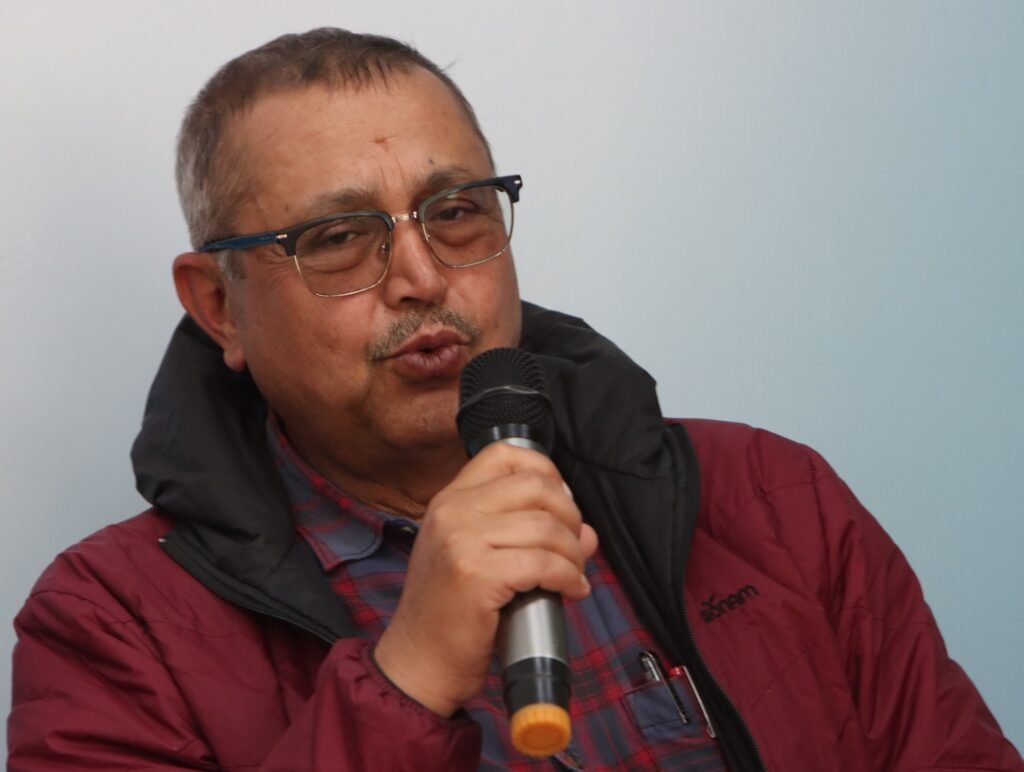
“We aim to teach students to think independently and critically question both external influences and their own assumptions,” he said. Guragai warned that the economy’s reliance on independent financing poses a growing external threat to journalism.
Ms. Nirmala Sharma
Sharma reflected on the transformation of journalism since the era of mission journalism. “We must adapt to today’s challenges with support from media institutions and beyond,” she said. Mainstream media, once dominant in news dissemination, now relies heavily on social media to distribute content—highlighting the growing divide between the two.
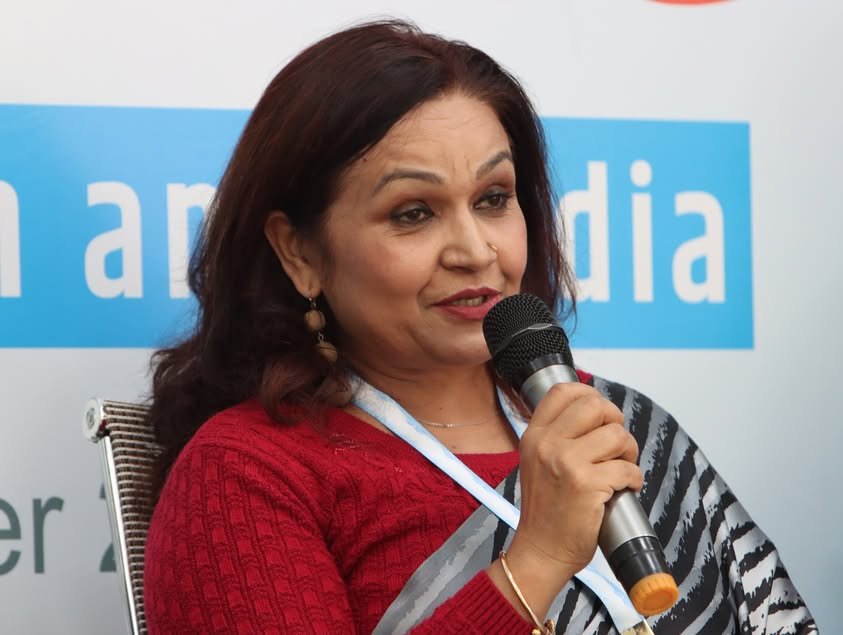
This shift has blurred the line between traditional and digital journalism, presenting both opportunities and risks. Sharma emphasized embracing the speed and reach of social media while safeguarding credibility and accountability. “We must be more responsible and value the quality of media content,” she said.
Mr. Biswas Baral
Baral noted that while digital platforms are gaining popularity among younger audiences, print newspapers still hold value and have adapted to meet modern demands. “The question isn’t digital vs. print,” he said, “but which medium best connects us with our audience.”
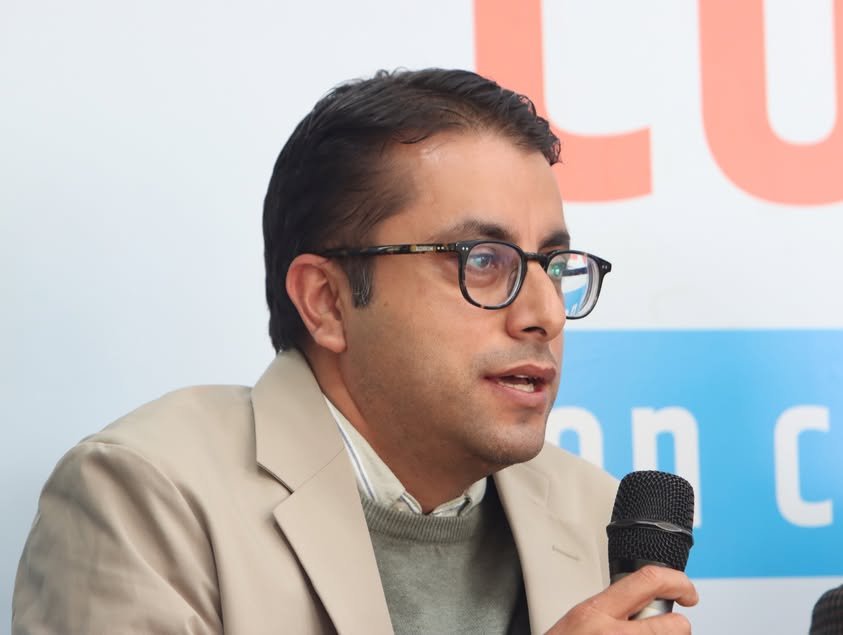
He encouraged innovation to ensure content remains relevant and accessible across all platforms. His comments sparked a lively discussion on the future of readership and the interplay between old and new media. He also pointed out that English is often more accessible to younger readers than Nepali, which has influenced hiring trends in journalism. “Print media is evolving,” he concluded.
Question & Answer Session
Prakash Kapali (Ratna Rajya Campus):
“How has the growing number of journalists ensured a promising future for the profession? Many are leaving journalism due to a lack of opportunity. What are your thoughts?”
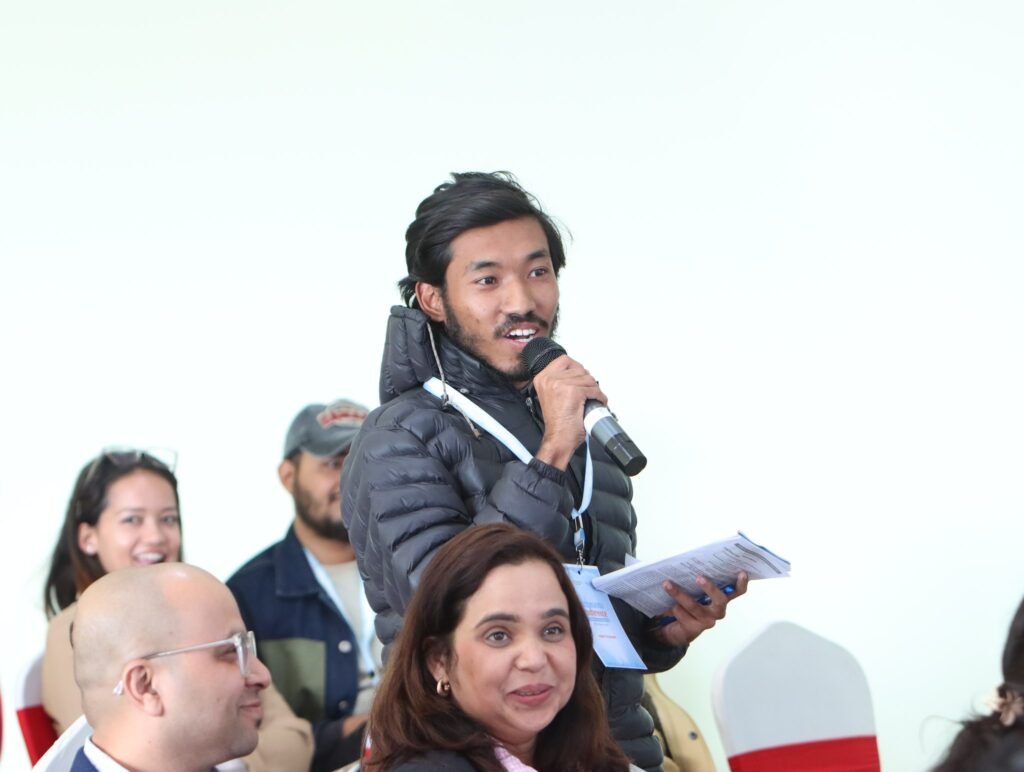
Lekhanath Pandey:
“We’ve observed the discussion from three perspectives: technology, internal dynamics, and academic curriculum. My question is, as media workers, scholars, editors, and circulation experts—where is the transparency? The issue isn’t just investment or affiliations, but the increasing visibility of these challenges. Shouldn’t we revisit and review these aspects?”
Ravin Pun Magar (CDJMC):
“There has been discussion on the role of journalists, but how does journalism protect its practitioners? What mechanisms or support systems exist to safeguard journalists?”
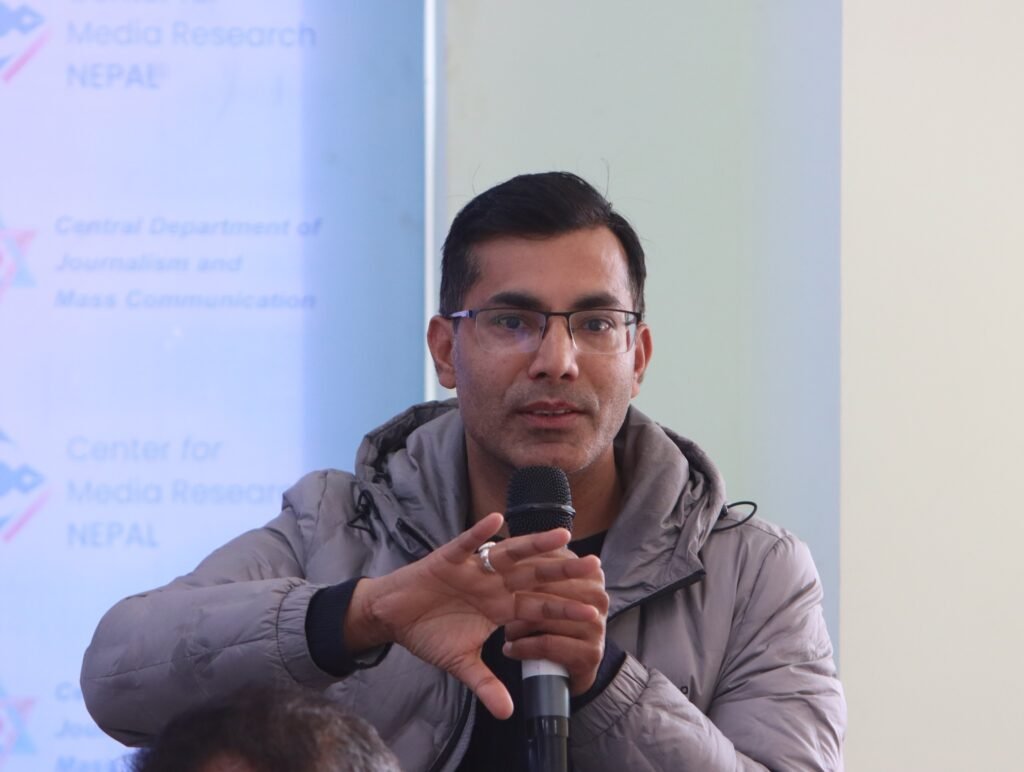
Response from Ms. Nirmala Sharma
“Yes, journalism has a future,” Sharma affirmed. “The health of the media sector isn’t about numbers alone, but about quality and adaptability. Journalism students bring new ideas and energy to the profession. We need more of them.”
She emphasized the need to create compelling content, critically assess it, and offer the public original reporting. “To secure a bright future, we must inspire the next generation by showing the value journalism holds and by nurturing its many strengths.”
Moderator’s Remarks – Dr. Shreeram Paudel
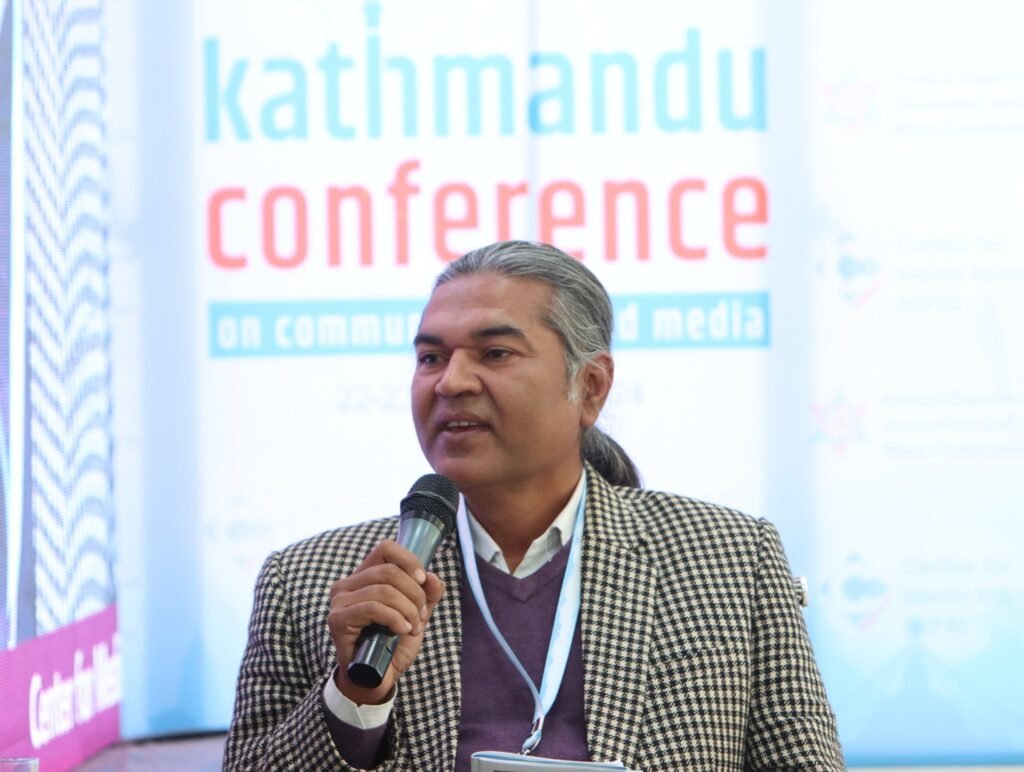
Dr. Paudel opened the panel with a comprehensive overview of the evolving media ecosystem. He outlined the transition from traditional to digital media and set the stage for critical discussion by posing a series of reflective questions:
- “How will the future of media unfold?”
- “What will journalism look like in two years?”
- “How do we build a value-based future for media?”
- “Can print survive the rise of AI and new digital platforms?”
- “What is the role of technology versus human creativity in content creation?”
These questions framed a dynamic and thought-provoking conversation on the future of journalism in a rapidly digitizing world.
The rapport is prepared by Ms. Iksha Limbu of CDJMC and the original text is edited for grammar and spelling by ChatGPT.
